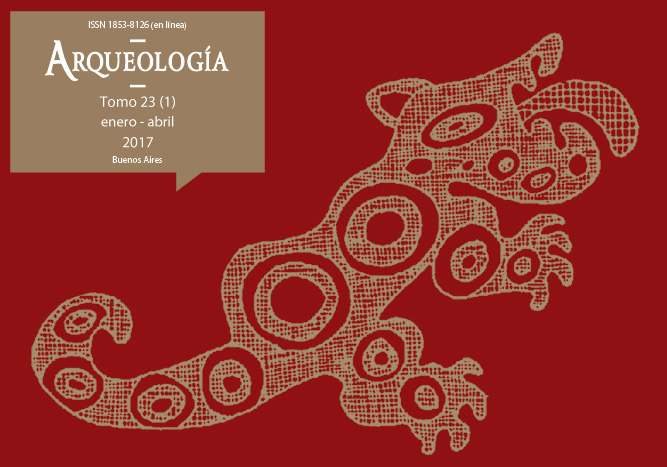Heritage in the landscape. Historic characterization of territory and archaeological heritage of the center of Buenos Aires province
Keywords:
Archaeological heritage, Landscape, Territory, Vulnerability, Preservation
Abstract
In recent years, the interdisciplinary research group PATRIMONIA has developed a database to systematize the main features of the archaeological heritage of the municipalities of Tandil, Olavarria and Azul, located at the geographical center of the Province of Buenos Aires. A preliminary analysis of its social significance was also carried out. The main goal of this project was to create a Geographic Information System (GIS) that would provide a usable input for culture resource management in the study area. The aim of this paper, was to present the spatial and historical analysis of the territory, and the particular characteristics of the archaeological heritage of the center of the Buenos Aires Province, and hence to further discuss issues related to the vulnerability of its archaeological heritage, as well as strategies for its preservation.Downloads
Download data is not yet available.
How to Cite
Mariano, C. I., Endere, M. L., Zulaica, L., Mariano, M., & Conforti, M. E. (1). Heritage in the landscape. Historic characterization of territory and archaeological heritage of the center of Buenos Aires province. Arqueología, 23(1), 61-81. https://doi.org/10.34096/arqueologia.t23.n1.3658
Section
Articles
Authors who publish in this journal agree to the following conditions:
- Authors retain copyright and yield to the journal right of first publication with the work registered with attribution license Creative Commons, which allows third parties to use the published always mentioning the authorship of the work and first publication in this magazine.
- Authors can make other independent and additional contractual arrangements for the non-exclusive distribution of the version of the article published in this issue (p. Eg., Inclusion in an institutional repository or publish it in a book), provided that clearly indicate that the work was published for the first time in this magazine.
- It allows and encourages the author / s to publish their work online (eg institutional or personal pages) before and during the process of revision and publication, as it can lead to productive exchanges and greater and more rapid dissemination of work published (See The Effect of Open Access).





(1)13.png)






1.jpg)
1.jpg)


13.png)
1.png)


(1)1.png)









